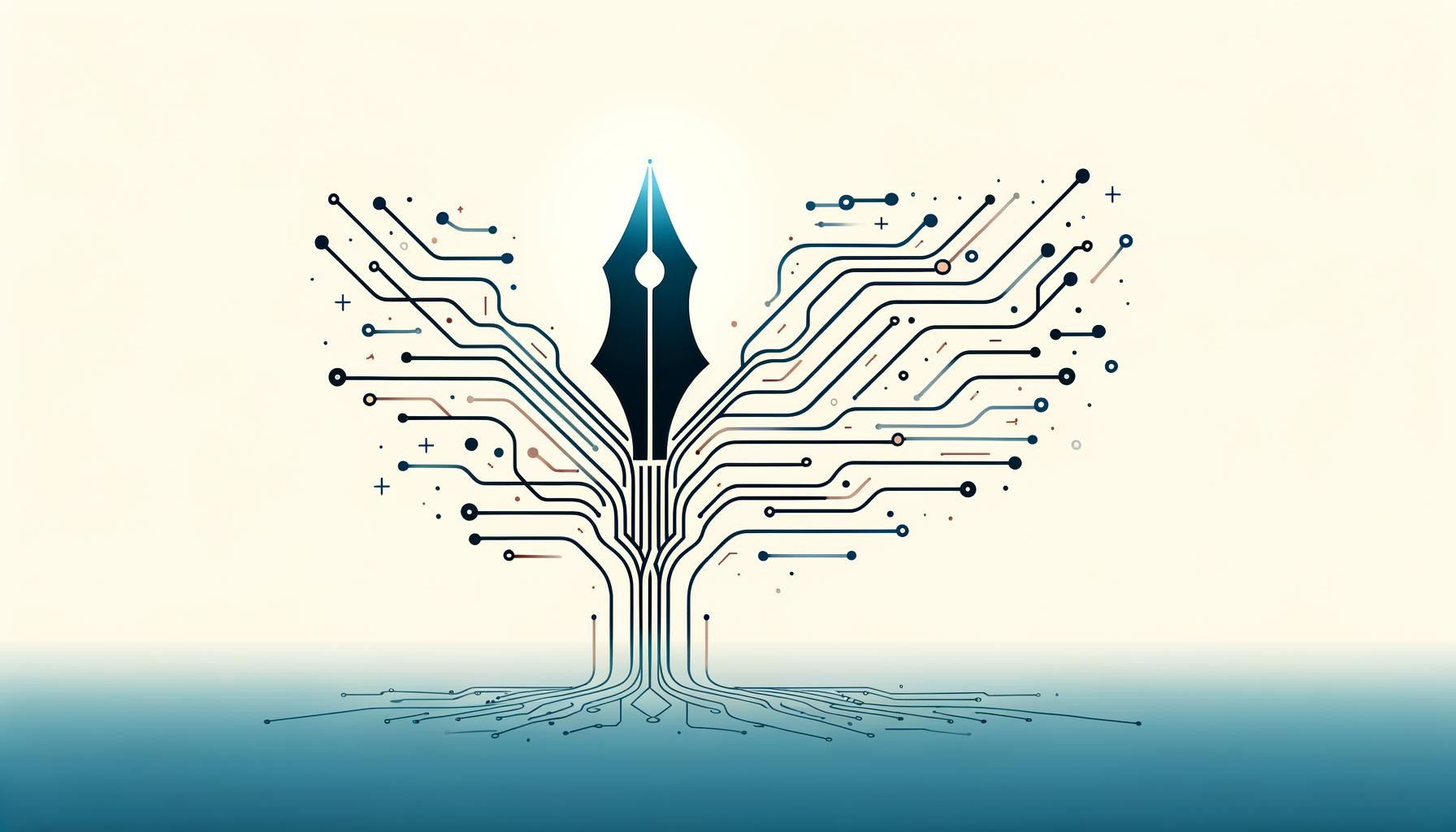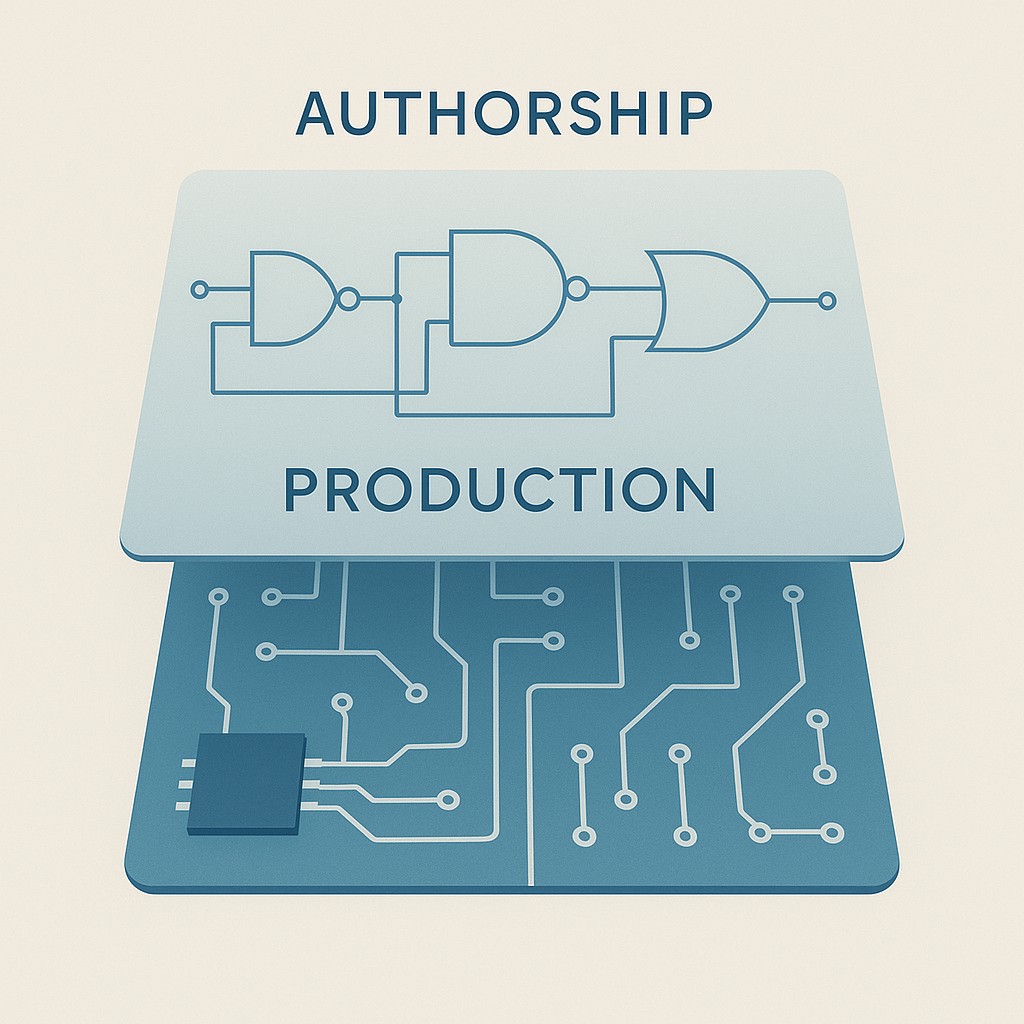AI-assisted authorship attribution guidelines: clear roles and credit
AI-assisted authorship attribution guidelines: clear roles and credit

Who Owns the Draft?
I started with a messy stream of thought—just free-writing a seed idea as soon as it hit. No edits, no hesitation. Then I threw it to the LLM and asked: ‘What questions am I missing?’
From there, things snowballed. I handed my draft to the AI for cleanup, let it suggest expansions, got it to hunt down missing research, and had it structure my scattered thoughts into something readable. Five minutes later, it was formatting, adding narrative polish, even nudging me about SEO tweaks. The pipeline, honestly, is now so fast that my own writing voice sometimes feels like just another input.
But then I hit a wall. If the AI’s hands are on every step, what do AI-assisted authorship attribution guidelines say about who actually gets credit for this piece? Is it still me, or is it the machine behind the scenes?
At first, it seemed obvious—I’m the author, AI is just a tool. The more I built with it, the less sure I became.
That’s the question engineers and technical creators are stuck on: how do you own your work and give the right disclosure without making your role look fuzzy, or worse, losing trust with readers or teammates? The issue isn’t just about egos or bylines. It’s about accountability, reputation, and the way teams collaborate when every draft passes through AI before anyone reads it. If you don’t get attribution right, you risk undermining the trust that makes any technical writing credible.
Authorship Versus Production: Naming the Split
Authorship is the “why” of a piece—the insight, the argument, the intent that steers everything else. Production is the “how”—the phrasing, formatting, and assembly that turns ideas into an artifact. Think of it like designing a circuit board. Authorship is mapping the logic. Production is soldering the components.

We need to be deliberate about this split. When you’re building technical documentation or shipping anything with your byline, teammates trust that attribution reflects who drove the thinking versus who supported the work. It’s not about gatekeeping. It’s about making collaboration clear and repeatable.
Now, the industry’s shifting fast. Medium recently announced AI disclosure guidelines requiring that all AI involvement must be disclosed, but just saying “AI involved” doesn’t tell anyone what actually happened. Noting AI usage is table stakes. The real move is naming roles—who authored the reasoning, who produced the polish. The difference calls for more than a checkbox. As the web fills with co-created work, we need credit systems that map to what really happens in the workflow.
So here’s the lens I lean on. If this were a film and we rolled the credits, what role would I have? What role would the AI have? That simple question sets up everything that follows.
Mapping Authorship: Who Actually Made What?
Let’s state this in plain terms. In AI authorship attribution, authorship comes from the origin of the core insight and intent. Production is just execution—turning the raw idea into something finished, polished, and readable. There’s a sticky line here. AI can’t be named as an article author—it can’t meet key criteria for human authorship, so the distinction sticks. That’s not a technical fine point. It’s the anchor for everything that comes next.
Here’s the simple test—I call it the value-without-AI test. Strip away the AI layer entirely. What’s left? Is there a meaningful insight or story still standing without any automated help—something you’d bother giving to another person to read? If the answer is yes, you’re the author. That core idea, the “why,” is yours. If not, well, execution tools shouldn’t get top billing for just dressing up a skeleton. There are drafts where I lean too heavily on the machine and have to ask myself: would this post even exist without me? That check has saved me from putting my name on a pile of well-structured fluff.
My role in this workflow is clear. Director, executive producer, the person who sets vision and intent. I own the blueprint. I drive the “why” and make the fundamental calls.
AI’s role shakes out differently. Head writer, editor, researcher, post-production. It does the heavy lifting on clean copy, structure, and filling gaps, but it never invents the core direction. No amount of polish changes that.
I started paying attention to credits during a film’s end roll—the way everyone from costume designer to grip gets named, with roles separated and visible. Watching that, I realized engineers do a version of this every time we merge pull requests and assign reviewers. It’s not just paperwork; it changes how teams feel about contributing. The clarity of “who did what” drives ownership, and the lack of it leaves people quietly irritated (but rarely saying so out loud).
So this is where I land on disclosure: “human-authored, AI-produced.” That language separates who provided insight from who executed it. Tools get named—down to the specific AI model and the jobs it handled, not just a vague “used AI” tag. Disclosure means naming every tool, its version, and clarifying how much the AI contributed—not just saying ‘used AI’. When you write, start with the question—if the AI vanished, would your post still matter? That’s the heart of authorship. The AI doesn’t care what’s said. I do. That matters, and it’s what builds trust when we ship anything as a team.
From Framework to Practice: AI-Assisted Authorship Attribution Guidelines for AI-Driven Work
Let’s get concrete. Here’s how you turn the framework into actual steps, start to finish. First, map your workflow—each phase, every tool, each person. Take a recent piece: you start with a half-formed hunch, maybe just a sentence or two. That’s raw authorship. Next, ask the LLM for clarifying questions to flesh out your thinking—good, but still your direction. Then, do a free-write: 300–400 words, no worrying about perfect grammar, just dumping your intent. Only after that do you bring AI back—have it clean up the language, reorganize, and spot missing logic. It might handle research, tighten SEO, or break your wall of text into readable chunks. At every checkpoint, pause for the value-without-AI test. If you cut every AI output, is the main argument still yours, and would it stand up if you just pasted in your messy draft? If yes, you’re still the author.
Assign “production” or “editor” to the AI for all the execution-heavy tasks—don’t give away your credit for the core ideas. This mapping makes it obvious where your input ends and automated support begins.
For almost any execution job—structuring, research, copy-editing, formatting, SEO, or even swapping bullet points for a narrative voice—it’s the same rule. These are “producer” jobs, not author ones. If your concept, intent, and argument are original, stake the authorship. Label your artifact “human-authored, AI-produced” to explicitly credit AI in content so no one’s guessing who steered. Remember, authorship rides on conceptualization—the initial idea, the core goals—not just execution details.
Translating this to real life: put explicit authorship credit with AI for code (“Designed by X, generated and documented with GPT-5”), for PR descriptions (“Feature idea & spec by Sarah, post-processing and doc outline by Claude 4o”), or blog posts (“Human-authored, AI-produced: core argument by me, research curation and narrative flow by Gemini 2.5”). That way, both your readers and teammates see the handoff points. Nobody’s confused about who to ask when something breaks, and the credit is both honest and functional.
Okay, quick digression—last week I watched a team fight over who “actually” originated a bugfix from a Slack thread. Three people involved, two different PRs, one AI-generated description. No one wanted to own the bug at first, then suddenly a fourth teammate claimed the “concept” that saved everyone an extra deployment. It ended up sorted, but the weird part was realizing how much energy everyone spent defending their slice of the credit. It almost felt like passing around a trophy no one wanted fingerprints on. It’s not exactly the same as the authorship debate here, but I’m convinced the source of tension is similar—when the lines get blurry, trust erodes.
Now, let’s talk edge cases. Sometimes, AI does more than just refine—you get an answer or angle you hadn’t even considered, and suddenly the core insight is arguably the model’s. In those cases, the value-without-AI test forces you to slow down. If what matters most in the piece came from the LLM’s output, assign it “AI-proposed, human-produced.”
For group efforts where you and AI push ideas back and forth, list the team, map roles (creator, synthesizer, producer), and always split credit: humans for intent and synthesis, AI for generation and cleanup. With any artifact, if the main structure is yours but the meat comes from AI research or phrasing, keep authorship but be explicit about “AI as main producer.” Transparency protects not just trust, but your own reputation if a reader starts questioning originality. I’ve ended up in this gray zone more than I’d like, and forcing myself to document the core insight’s source—however awkward—has kept my name safe when something gets challenged.
If you work on a team, normalize this. Add role-based attribution to your doc templates, your PR checklists, your code review sign-offs. It’s not about being self-deprecating or putting yourself second. It’s about owning the whole workflow, which in turn makes AI support feel like just another healthy part of collaboration.
That’s how this practice stops being theoretical and starts actually reducing friction: follow AI-assisted authorship attribution guidelines—map roles, run the authorship test, assign clear language, and standardize attribution across the team. That’s how you keep trust intact, even as every artifact you ship gets more AI in the pipeline.
Building Trust and Repeatable Collaboration
Clear, defensible credit isn’t just paperwork. It’s the trust glue for technical teams. When attribution lines are obvious, teammates know exactly who shaped what and where the core thinking came from. The practical upside? Friction drops, collaboration gets consistent, and handoffs stop being awkward. It’s like calling who’s playing offense and defense; everyone knows when to step up or offer feedback. If you want fewer back-and-forths over ambiguous edits, start with explicit credits—framing cuts down back-and-forth.
So to answer that first doubt—who really writes the piece? If the core understanding and intent started with a human, the authorship belongs there. Production tasks, no matter how sophisticated, don’t cross that line.
You’ve got enough ambiguity in your workflow already. Here’s my move. Run the value-without-AI test next time you finish a draft, then add a quick line to your project credits distinguishing “human-authored, AI-produced.” Try it on your next artifact. It takes two minutes, tops.
Spin up your next ‘human-authored, AI-produced’ draft in minutes—set intent, map roles, and let the AI handle structure, research, and polish while you keep authorship.
Writing with AI is only getting more integrated, and if we don’t name roles now, the line between direction and execution will blur beyond repair. The urgency grows every month—I’m not waiting for someone else to draw this boundary.
And truthfully, as much as I push this system, I haven’t fully decided if “ownership” is what matters most. Maybe what we get instead is a version of creative credit that’s a little messier, but a lot more honest. Still working out where I land on that.
Enjoyed this post? For more insights on engineering leadership, mindful productivity, and navigating the modern workday, follow me on LinkedIn to stay inspired and join the conversation.
